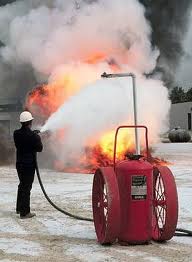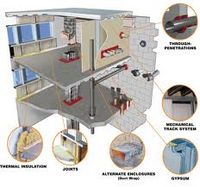Fire Protection Systems
Fire protection systems are devices or set of devices that detect, supresses and warns people of possible danger of fire.
Alarm Pull Stations
Fire alarm pull stations are generally located at each exit door, stairwell and elevator bank. The evacuation maps posted in Harvard buildings show the floor-by-floor locations of all pull stations.
By pulling the handle, the Cambridge Fire Department and the Harvard University Operations will immediately receive a signal that there is an alarm condition in your building.
Almost all pull stations require that you simply pull the handle indicated to activate the alarm. Occasional exceptions have covers that were installed because of wet conditions.
Smoke and Heat Detectors
Smoke and heat detectors are located in various locations throughout our buildings. Smoke detectors are activated by smoke or dust; heat detectors are activated by heat. The activation of a smoke or heat detector will start the fire alarm system and send a signal to the Harvard University Operations Center that there is an alarm condition and its location.
Sprinkler System
Many Harvard buildings are equipped with automatic sprinkler systems. Sprinkler heads are activated by a substantial rise in temperature. If a sprinkler head is activated, the fire alarm system will activate just as it does in response to a pull station or smoke detector signal.
Other Features
In addition to the various fire protection systems previously described, the fire alarm systems in many buildings also include strobe lights that flash with the pulsing tone throughout the building whenever an alarm system is activated.
The systems in some buildings include public address system that can provide announcements to all areas of the building.

